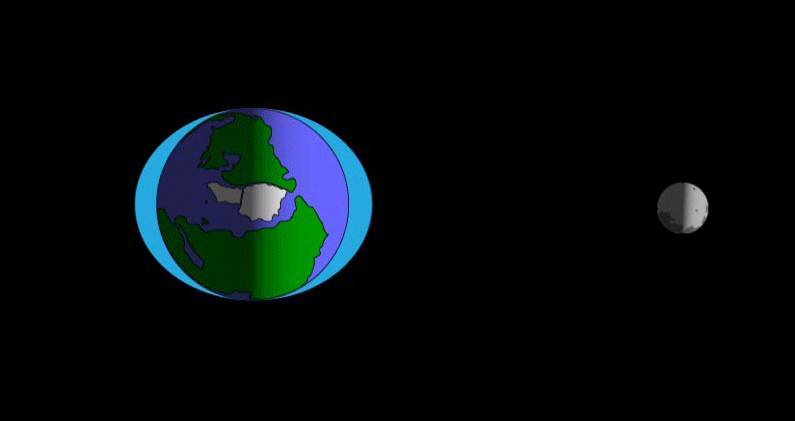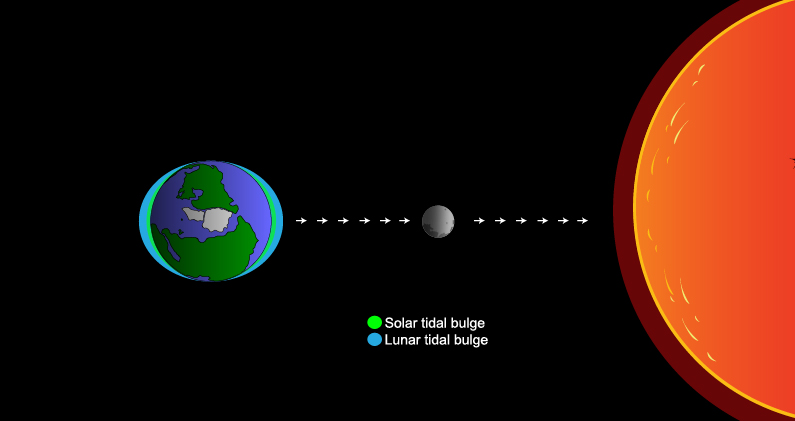King Tides have some Canadians on high alert, here's why
Meteorologist/Science Writer
Thursday, November 12, 2015, 5:03 PM - As we head into the time of year when king tides become a concern for the Vancouver area, residents are preparing for themselves for the worst. So, what are "king tides" and why do they cause such concern?
This week, residents of Vancouver's Locarno Beach area were laying down a wall of sandbags between the beach and the road, in the hopes of warding off any potential flooding. The reason - the possible arrival of a storm surge at the very same time that the region is expected to reach high tide.
According to the website of Fisheries and Oceans Canada, tides in the Vancouver area are expected to reach a height of around 4.6 metres over the next few days. They've reached that height at times during the past year, however the addition of the storm surge brings some justifiable concern.
As it stands, the sand bags are likely going to remain even after this storm has passed, as the region heads into what is known as "king tide" season.
What's going on here? What are king tides?
Tides are a regular fact of life for Canada's coastal regions. The waters along our shores advance and retreat twice every day, these tides swell even higher and drop even lower twice every month, and there's even a cycle that you need a yearly calendar to track.
What causes all of these tidal cycles? The gravitational "dance" of the Earth, the Moon and the Sun.
Due to the presence of the Moon, the Earth itself and everything on its surface feels a slight pull of gravity in its direction. It's a fairly weak force compared to the gravitational pull of the Earth, so it's barely noticeable to anything on the small scale. When it comes to the kilometres-deep fluid filling Earth's oceans, however, the collective pull on all of the individual water molecules sloshing around in there adds up. This results in a bulge of water pointing roughly in the direction of where the Moon is in space (there's some lag due to friction), a corresponding bulge on the opposite side of the planet due to inertia, and lower waters in between.

The lunar tidal bulge in Earth's oceans. Not to scale. Credit: NASA Scijinks
As the Earth rotates through its 24 hour day, that tidal bulge remains pointed along the same axis, and this translates into a twice-daily cycle of tides. At the same time, the Moon is orbiting around the Earth, tracing out an elliptical path on a 29-day schedule.
This change in the Moon's position throughout a month causes the timing of the high and low tides to advance by a bit each day. It also produces slightly higher tides, overall, when the moon is moving through its closest point to Earth (perigee) and slightly lower tides, overall, when it is moving through its farthest point from Earth (apogee). While each orbit of the Moon has a corresponding perigee and apogee, some perigees are closer and some apogees are farther away, thus adding some variation into the tidal cycle.

How the lunar tidal bulge changes during the Moon's orbit around Earth. Not to scale. Credit: NASA Scijinks
With the Earth and the Moon always in motion around the Sun, our home star exerts its own influence on the oceans as well. While this influence isn't as strong as the Moon's - the Sun may be bigger, but it's much farther away - it still results in a second tidal bulge that's always deeper on the day and night sides of the planet and shallower along the terminator between day and night.
The combination of these two tidal bulges, as they slip in and out of alignment with each other, are responsible for the highest tides we see.
Twice every month, at the time of the Full Moon and the New Moon, Earth, the Moon and the Sun all line up with each other. This causes the tidal bulges to line up as well, and coastal regions see higher tides than usual - known as spring tides.

The combination of lunar and solar tidal bulges during a New Moon. The same configuration of tidal bulges occurs during a Full Moon as well. Not to scale. Credit: NASA Scijinks, with edits by author
As all of these different cycles and shifting influences remain in play throughout the year, the very highest tides happen when all the collective forces line up best.
A few times each year, when the Moon happens to be passing through its perigee for that orbit, at the either at same time that a spring tide is occurring or very close to it, it produces some of the highest tides of the year, known as perigean spring tides.
Many places on Earth experienced these just after the September 27/28 supermoon lunar eclipse, since that was the closest perigee moon of 2015.
For some, it was when they experienced their King Tide - their absolute highest tide for the entire year.
As Earth approaches its closest point to the Sun (perihelion), in early January, the gravitational influence the Sun has on the oceans is becoming stronger, so the solar tidal bulge is growing larger. However, since the lunar tidal bulge is the dominant one, it still takes a Full Moon or New Moon for the highest tides to appear.
If the year's closest perigee moon actually happened at the same time as perihelion, we would definitely see the highest tides possible. Apparently, the last time that everything lined up that well was on January 4, 1912, and it will do so again on January 3, 2045, with a "close" alignment on January 1, 2018.
In 2015, with the closer perigee full moons occurring in the latter half of the year, this is combining with the increasing influence from the Sun, so that tides are expected to reach their highest in the Vancouver area towards the end of November and December.
According to Fisheries and Oceans Canada, the city's beaches can expect high tides reaching up to 4.9 metres on November 28 and 29, and then again on December 27 and 28, just days after the full moons of those two months.

Dates and distances of the last four full moons of 2015. Credit: NASA Goddard, with edits by author.
Sources: CBC | NASA/NOAA | Fisheries and Oceans Canada
Related Video: Watch a storm surge along with high tides along Bayside Drive in Saint John, New Brunswick, on Oct 29, 2015.



